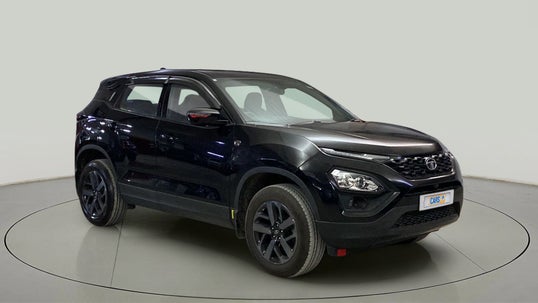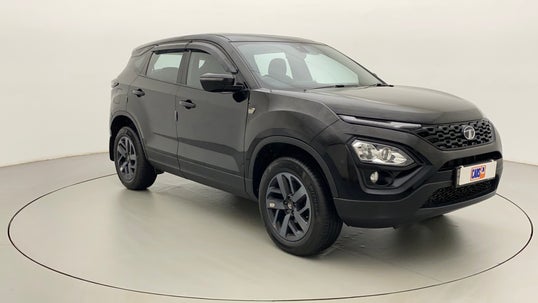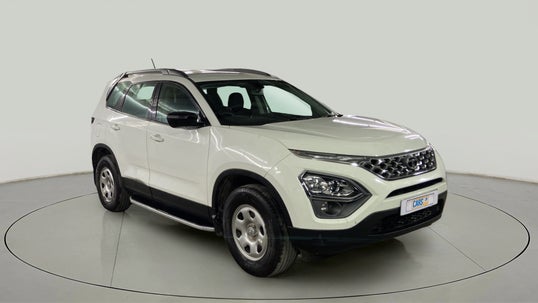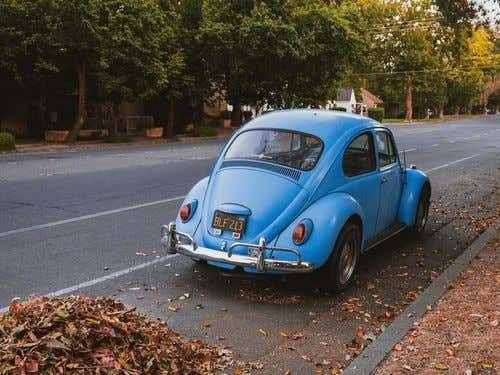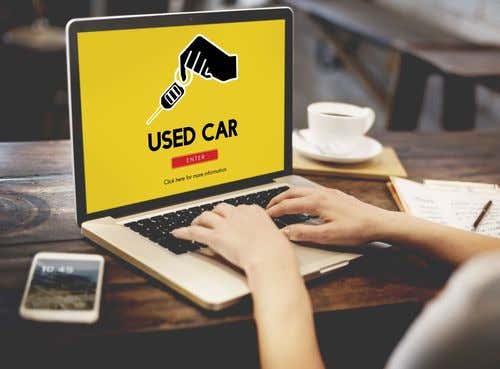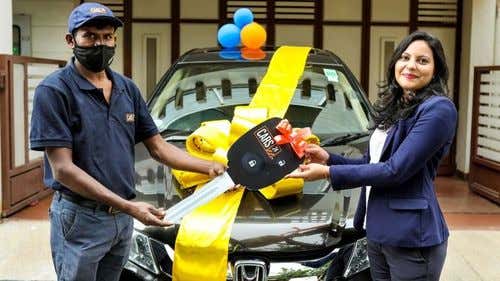What to Do When Your Car Has Flooded in the Rain: Step-by-Step Guide

Updated on: 21st April, 2024 IST
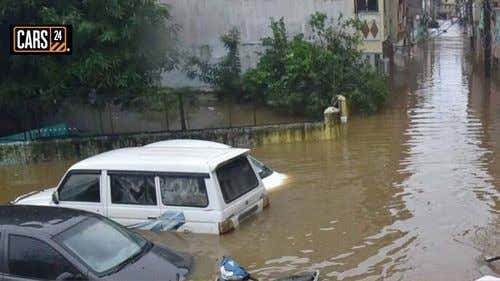
Floods are extremely common in India during the monsoon season. In most cities, it only takes a light shower for the streets to turn into gentle streams, and quickly into raging rivers. To a car, floods are kryptonite – no matter how convincing some of the ads on TV look. Yes, most cars can manage in a little bit of water (about a foot in height and for a couple of minutes), but staying in deep water for extended periods of time is a big NO-NO. Nevertheless, since flooding in India is as inevitable as Thanos (spoiler alert), here are some tips that can help you get out of a wet situation with very minimal damage.
Also Read - Tips on How to Safely Drive Through Flooded roads
Also Read - Things To Do If You Own A Flood-Affected Car
Table of Contents
What To Do In Case Your Car Is Caught In A Flood?
The first thing you SHOULD HAVE DONE was to turn around and find another route. However, you now have a car that is stuck in the water and is going nowhere. Here’s what you need to do:
Do Not Try Turning The Car On – This cannot be stressed any stronger. Water can damage every single component inside a car including the engine and transmission. If you try to turn the engine on and more water enters, the problem only worsens. When water damages the engine and the pistons don’t compress or move like they normally should, it is called “hydrolock” and it is extremely common in flooded cars. If your car is hydrolocked, you can expect the cost of repairs to be extremely high and in severe cases, the car could completely be destroyed.
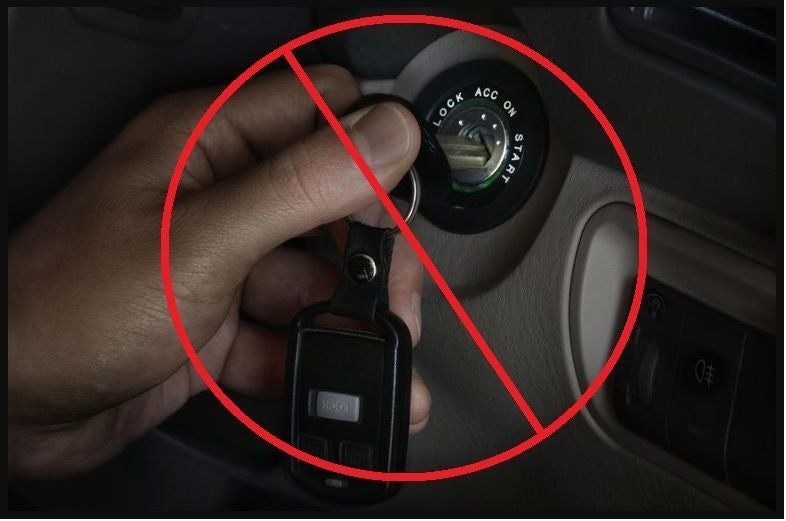
Get As Much Of The Water Out – When water remains stagnant for long periods of time, it is capable of doing extensive damage to anything it comes in contact with. The wiring and mechanical components are the first things that can get damaged so you will have to work fast. If you find puddles of water in your car, you will have to get rid of them as soon as possible. If you have a wet/dry vacuum cleaner, you can remove the puddles quickly or you can use towels to soak up the water and remove it from the cabin. If you are using a vacuum cleaner, make sure it is not a regular one as you could get electrocuted in the process.

Keep The Car Ventilated – Simply removing the water from your car doesn’t solve your problems. Your need to immediately start drying the areas that were flooded. If there is enough sunlight near where your car is parked, simply roll down the windows, open all the doors, and let the heat from the sun work its magic. If there is not sufficient sunlight, you can park your car in an open space and use electric or battery-operated fans to dry out the damp areas. A fan will also help remove any foul odours and keep mould and mildew away. If your car was not severely flooded but the cabin remained wet, you can use the heaters in your car to dry the interiors quickly – just make sure that the engine was not damaged.
Also Read - How to Stop Condensation in Your Car

3. Ventilate the car:
Once you have successfully removed the water build-up from the cabin and other places in the car, you will have to work just as fast to dry the affected areas. If there is enough sunlight near where your car is parked, simply roll down the windows, open all the doors, and let the heat from the sun work its magic. If there is not sufficient sunlight, you can park your car in an open space and use an electric table or standing fan to dry out the damp areas. A fan will also help remove any foul odours and keep mould and mildew away. If your car was not severely flooded but the cabin remained wet, you can use the heaters in your car to dry the interiors quickly – just make sure that the engine was not damaged.
Also Read - Monsoon Car Care Tips for Interior and Exterior
Step-by-Step Guide on What to do if Your Car is Flooded
Since the monsoons are already upon us, here are some steps to help you get through the process of resuscitating your flood-damaged car:
Step 1: Avoid starting the car when it is flooded as the collected water could cause more and irreversible damage to the engine and other components.
Step 2: Once the car is out of the water and on dry land, you should first check out the extent of the damage and assess what needs to be done. You can check if the water level was high enough to enter the car or stopped below the doors. In most cases, insurance companies consider water damage to the level of the dashboard as a totaled car and will not look for repair work to be done on it.
Step 3: If your car insurance policy covers theft and fire, it would also cover flood damage which is a good sign. However, you will have to be extremely thorough when going through the policy as companies could specify what they are willing to repair and what they choose not to. It is best to go over your policy with your agent as the policy can cover everything from floor mats to entire engine changes.
Step 4: When the weather brightens up or if you can find a spot where you and the vehicle are sheltered from the rain, you need to start working on drying the car out quickly. Water damage can be extremely severe, especially to metal and electrical components. You should open all doors and windows to allow air to flow through the entire vehicle. This will stop mould and mildew from growing. You can use towels, mops, or dry/wet vacuum cleaners to get rid of the water inside the cabin. If you can, remove the seats and allow them to dry outside the car so that the cabin gets more ventilation.
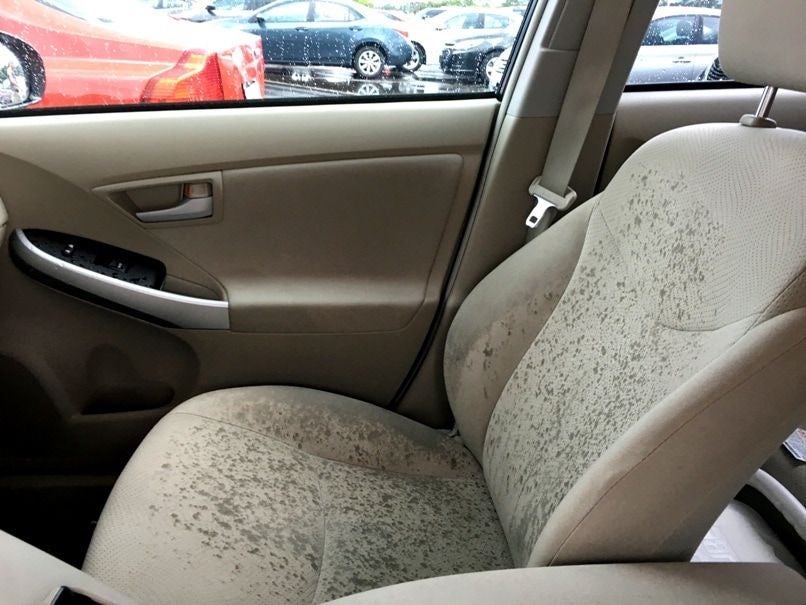
Step 5: Damp surfaces are a haven for bacteria and fungus and this leads to foul odours. After cleaning your car, you will probably have to replace components such as the floor mats, carpets, upholstery, and maybe even the inner door panels as they all absorb water and could encourage the growth of mildew and mould. If the components are not damaged badly, you should use baking soda to deodorize the car before putting everything back.

Step 6: Once the cabin is taken care of, you should immediately start working on the engine. First, you need to check if water has entered the oil tank. Using the dipstick, check if there are droplets of water in the oil. If you do find some droplets, you should not start the car as this could break the cylinders inside the engine. The best thing you can do is have a professional mechanic have a look at the problem. In most cases, the fuel tank is emptied out and then the water is removed.
Step 7: Electrical components and water are a match made in hell and that is why you need to check all the wiring and connections before you can actually turn the car on. Once you find that nothing is damaged, you can start checking them one-by-one. Test the car’s headlights, taillights, power windows, turn signals, power locks, seats, lights in the cabin, air conditioning, infotainment system, and any other components that are connected by wire. You should also test the brakes, clutch, steering, and coolant reservoirs. If any of these components or parts are not working properly, you should get a mechanic to take a closer look at the vehicle.
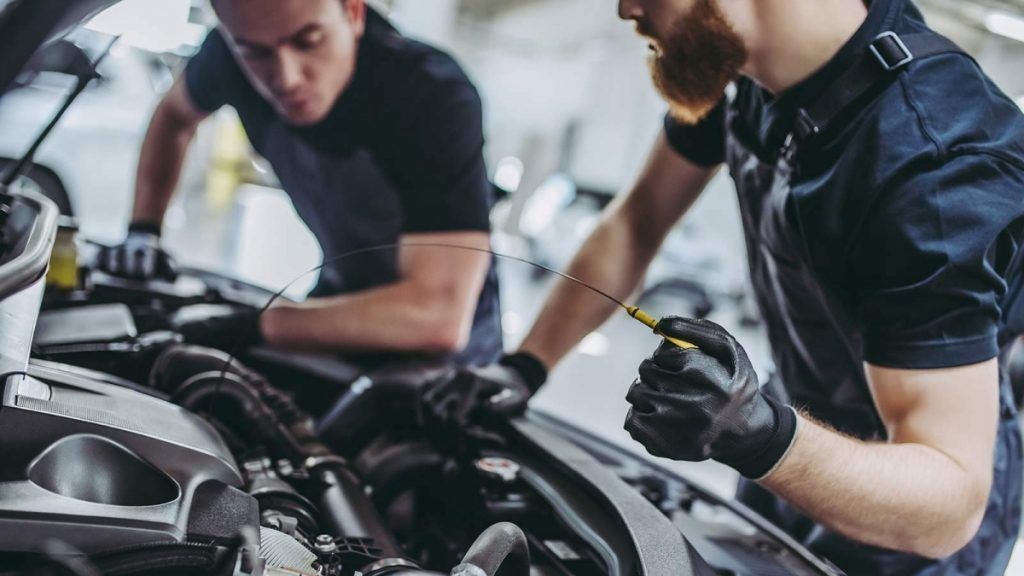
Step 8: If you can, get a professional mechanic to take a closer look at your car and see if everything is in working condition. If it’s not, you have to start the insurance work. An agent from the insurance company will take a close look at your car and evaluate whether it should be repaired or replaced. If the cost of repairing the vehicle exceeds its worth, the insurance company will most likely consider it as a totaled car. The insurance agent will take your insurance claim along with photographic proof of the damage to the company for further evaluation.

Step 9: If you feel that the repair costs for your flood-damaged car are more than what a new car would cost, you have to move forward with choosing a new one. If you are thinking about a used or second-hand car, there are a number of things you have to consider before you can actually make the purchase. Ask the previous owner or dealership for the history report of the vehicle so that you know all the important information such as previous owners, repairs, and odometer readings. This will also tell you if the car has been in any accidents or has been damaged by fire or floods previously. Finally, you should also get a mechanic to check out the car to ensure that it is good enough to take home.
Step 10: When buying a new car, there is a lot of thought and decision-making that has to go into it. The first thing you have to figure out is your budget. Next, you have to decide on the type of car you want (hatchback, SUV, sedan, etc.). Then, you have to choose the brand you want and see whether they have the colour option you want. With new cars, you have to choose from a number of different variations as well so it’s best to do a lot of research before you can actually settle on one car. Also, always have options ready in case you don’t get the car you want at the price you’re willing to pay.
How To Clean A Car That Has Water Damage?
When it comes to cleaning a water-damaged car, speed is extremely important. The number one thing you have to do is find all the damp spots and get rid of them immediately. Water can cause a lot of harm to all the car components and can eventually leave your car totaled. It is best to remove all the water and dry the vehicle as quickly as possible. Here is what you need to do in case you have a car that has flood damage:

- Getting the water out is the number one priority for you when it comes to cleaning a flooded car. If water has collected in the cabin, you can use towels (kitchen or regular) to soak up and remove the excess water. This can also be used to remove water from the seats, carpets, and upholstery.
- Once the water is removed, you need to dry out the car as soon as possible. Use electric fans or the car’s heaters to remove any signs of moisture from the cabin. Most importantly, you have to open the doors and windows to allow air to ventilate the car naturally.
- After drying out the interiors, you should use an upholstery cleaner to get rid of odours and damp spots. These cleaners are easily available in most stores and can be used with a brush to clean out upholstery properly.
- Finally, you should keep an eye open for any signs of leaks or damp patches that may cause the car to smell and even cause the car to rust. If you find any damp patches, you should either fix them yourself or get a mechanic to work on them.
Common Problems Caused By Flooding
There are a number of problems that can come with flooding and water damage. Mould, mildew, and foul odours are just the beginning. When water collects around metal, rust is usually the end result – especially around the hood, trunk, and door panels. Here are some of the problems you can expect if your car is not attended to in time:
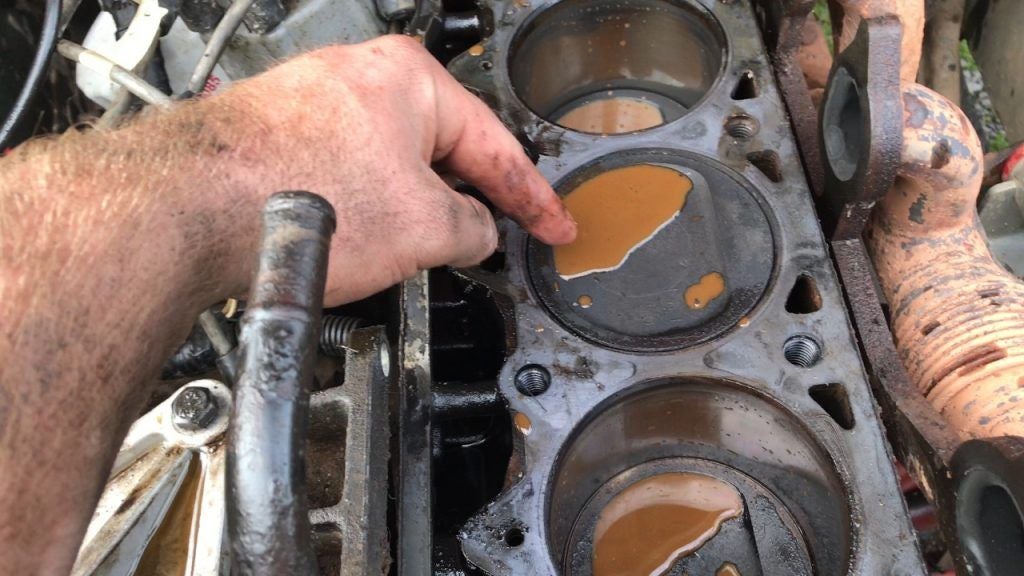
- Hydrolock – When a car is caught in deep water, hydrolocking is the biggest threat. When water enters the engine through the air intake, it normally causes severe damage to the pistons and cylinders. The worst thing you can do in this situation is turn on the engine – unless you want a completely totaled car.
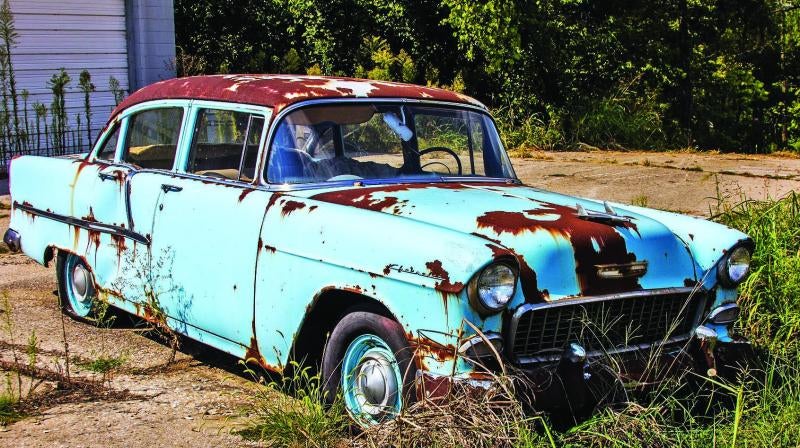
- Rust – As mentioned earlier, water and metal do not make for a great combination. Seeing that your car is predominantly made from metal, rusting is a major problem after it has been flooded. Make sure that all metal surfaces, especially those that are exposed, are properly dried or repainted so that rust is kept away.
- Electrical Issues – You should always keep away from the electrical components and wires of your car when it has been water-damaged – until the vehicle is dried out completely. Wires are often the first thing affected by a flooded car and only a professional mechanic should be allowed to work on them for repairs. The dashboard, radio, infotainment system, windows, doors, seats, lights, and even side-view mirrors all use wires for their functionality today and should be tested only when the car is dry and safe to use.
- Moving Parts – The brake, clutch, and accelerator are important parts of any car and they are often also the first to get damaged in a flood. Because these parts are moving components, water can find its way into them easily and damage them quickly. Other moving parts like the starter, pistons, and cylinders are also prone to severe damage in a flooded car. For repairs, a professional should be called in to ensure that nothing is further damaged.
Where Do Cars Usually Leak In Rainy Weather?
Although a car is designed to keep water out successfully, with time, the weather stripping found along windows and doors can get damaged. This results in leaks that allow rainwater into the car and cause damp spots everywhere. If you hear or see evidence of a leak in your car, make sure to find the source of the problem and get it fixed immediately. Even if the leak is small and only allows a drop or two into the cabin, it can build into a larger leak and cause damage to the upholstery, panels, carpets, and electronic components. If the weather stripping in your car has started leaking, you should either replace it with new stripping or clean it with car shampoo regularly.
What to do if your car has flood damage?
As we have already mentioned earlier, flooding can be a major problem for car owners and the repairs afterward are even more of a headache. So, if you have a car plagued by flooding or if you know of anyone who is going through it right now, here is a vehicle flood damage checklist you should also have prepared.
- Survey the damage by understanding how deep the floodwaters are.
- DO NOT start a flooded car.
- Either get a towing service to get the car to drier and higher ground or quickly start working on drying out the car to avoid corrosion.
- Get your insurance company to check out the damages and file a claim for your car.
With the monsoon already here, we can expect a lot of rain in the next few months. Driving in these conditions can be quite difficult and you have to be aware of your surroundings when driving. Puddles are very common on Indian roads and are a hazard for all vehicles. It is best to avoid them if possible, but if you cannot, you need to go through them slowly and safely. When you encounter a flooded road or a massive puddle, use these above-mentioned tips and steps to ensure that your vehicle is not totaled.
Also Read - Identifying a Flood Damaged Car: Important Pointers to Look Out For
Also Read - How to Drive in the Rain - Tips & Tricks
Also Read - Driving in the Rain - 10 Important Things To Know
Also Read - How to Prevent Car Windows From Fogging Up?
Recently Added Cars to Buy
Other Blogs
- Recent
- Featured
Popular Cities to Sell Car



